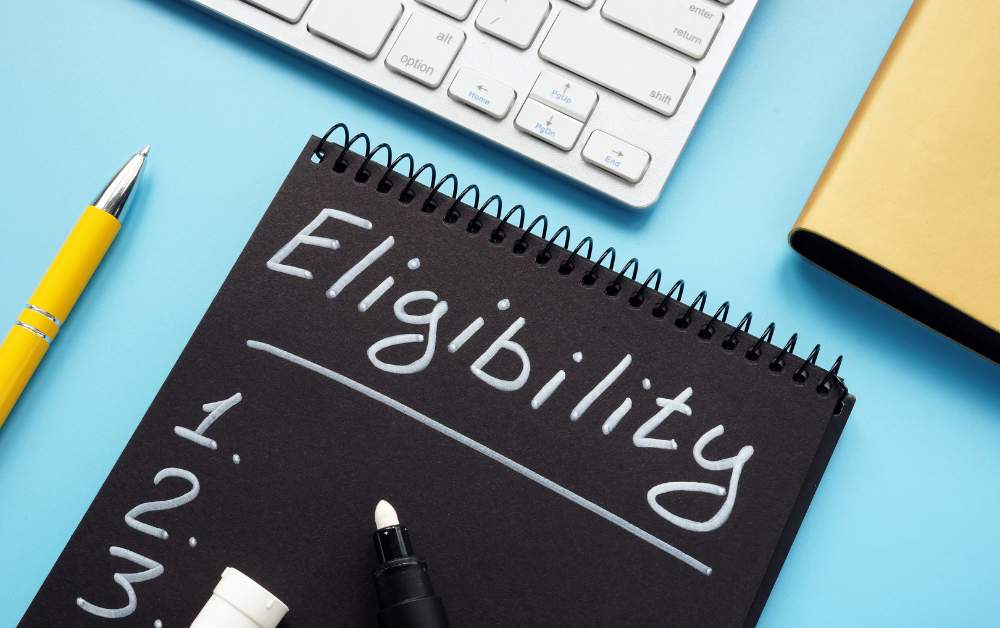For car enthusiasts, the thrill of driving a new vehicle is unparalleled. However, the financial aspect of car ownership is a crucial consideration. One common question that often arises is, “Do car payments come out automatically?” In this comprehensive guide, we will delve into the world of automatic car payments, providing insights, tips, and everything a car fanatic needs to know.
What Are Automatic Car Payments?
Automatic car payments, also known as auto-pay or autopay, refer to the process where your monthly car loan or lease payments are deducted automatically from your bank account. This hassle-free method aims to simplify the payment process, ensuring that you never miss a payment and incur unnecessary fees.
What Are The Benefits of Automatic Car Payments?
Automatic car payments offer several benefits for car owners, providing convenience and financial advantages. Here are some key benefits to consider:
1. Convenience:
One of the primary benefits is the convenience of not having to remember or manually make monthly payments. Once set up, automatic payments ensure that your car loan or lease payment is deducted from your account on the scheduled date, saving you time and effort.
2. Avoiding Late Fees:
Automatic car payments help you avoid late payment fees. Since the payment is deducted on the specified due date, there’s a reduced risk of missing payments and incurring penalties. This contributes to better financial management and helps maintain a positive credit history.
3. Credit Score Improvement:
Consistent, on-time payments play a crucial role in improving and maintaining a good credit score. By setting up automatic payments, you ensure that your payments are consistently made on time, positively impacting your creditworthiness over time.
4. Financial Discipline:
Automatic payments encourage financial discipline. Knowing that your car payment is automatically taken care of can help you better budget and manage your finances. It eliminates the temptation to delay payments or use the funds for other purposes.
5. Peace of Mind:
With automatic car payments, you gain peace of mind knowing that your financial obligation is being fulfilled without any manual intervention. This is especially beneficial for individuals with busy schedules who may forget or find it challenging to keep track of payment due dates.
6. Streamlined Record-Keeping:
Automatic payments often come with electronic receipts or transaction records. This facilitates easier record-keeping and simplifies the process of tracking your payment history, which can be useful for budgeting and financial planning.
7. Flexibility in Payment Frequency:
Many automatic payment systems offer flexibility in choosing payment frequencies, such as monthly, bi-monthly, or weekly. This allows car owners to align their payment schedule with their income structure, making it easier to manage cash flow.
8. Reduced Paperwork:
Automatic car payments often involve less paperwork compared to manual payment methods. This can be advantageous for those who prefer a more environmentally friendly approach and want to reduce the clutter associated with traditional billing statements.
9. Improved Security:
Automatic payments are often processed securely through encrypted transactions, reducing the risk of identity theft or fraud associated with traditional payment methods. This enhanced security adds an extra layer of protection to your financial transactions.
10. Continued Vehicle Use:
Ensuring timely payments through automatic methods helps maintain your vehicle’s ownership status. It reduces the risk of repossession or other adverse actions that may result from missed payments, allowing you to continue enjoying the use of your car without interruptions.
In summary, automatic car payments offer a range of benefits that contribute to a smoother and more efficient financial experience for car owners. From avoiding late fees to improving credit scores, the convenience of automatic payments positively impacts various aspects of personal finance.
How To Set Up Automatic Car Payments?
Setting up automatic car payments is a straightforward process, and it can save you time and help ensure that your car loan or lease payments are made on time. Here’s a step-by-step guide to help you set up automatic car payments:
1. Contact Your Lender or Leasing Company:
Start by reaching out to your car loan lender or leasing company. You can find their contact information on your billing statements, their website, or by calling their customer service. Inquire about their automatic payment options and procedures.
2. Gather Necessary Information:
Before contacting your lender, gather the information you’ll need for the setup process. This may include your account number, the routing number of your bank, and the account number from which payments will be withdrawn.
3. Choose a Payment Date:
Discuss with your lender the available payment date options. Some lenders may allow you to choose a specific date each month for the automatic deduction. Choose a date that aligns with your financial situation, such as around your payday.
4. Provide Authorization:
Your lender will likely require your explicit authorization to set up automatic payments. This may involve completing and signing a form or providing verbal consent over the phone. Ensure that you understand the terms and conditions associated with automatic payments.
5. Provide Bank Account Information:
To facilitate the automatic withdrawals, you’ll need to provide your bank account information. This typically includes your bank’s routing number and your account number. Double-check the accuracy of this information to prevent any issues with payment processing.
6. Confirm the Setup:
After providing the necessary information and authorization, confirm with your lender that the automatic payment setup is complete. They may provide you with a confirmation number or email for your records. It’s essential to keep this information for future reference.
7. Monitor Your Statements:
After the setup is complete, regularly monitor your bank statements to ensure that the automatic payments are being processed correctly. This will help you catch any issues, such as insufficient funds or payment errors, early on.
8. Update Information if Necessary:
If there are changes to your bank account, such as closing the current account or changing banks, promptly update this information with your lender to avoid disruptions in automatic payments.
9. Familiarize Yourself with Cancellation Procedures:
Be aware of the procedures for canceling automatic payments if you ever need to do so. This information is typically available in your agreement with the lender or on their website. Understanding the cancellation process is crucial in case you need to stop automatic payments for any reason.
10. Keep Contact Information Updated:
Ensure that your lender has your current contact information, including your email address and phone number. This ensures that you receive any important notifications or updates related to your automatic payments.
By following these steps and maintaining open communication with your lender, you can set up automatic car payments with ease, providing you with a convenient and stress-free way to manage your monthly payments.
What Are The Potential Drawbacks of Automatic Car Payments?
While automatic car payments offer numerous benefits, it’s essential to be aware of potential drawbacks to make informed decisions about managing your finances. Here are some potential drawbacks of automatic car payments:
1. Overdraft Risks:
One of the significant drawbacks is the risk of overdrafts. If there are insufficient funds in your bank account when the automatic payment is processed, you may incur overdraft fees. It’s crucial to monitor your account balance regularly to avoid such situations.
2.Lack of Control:
Automatic payments mean relinquishing some control over the timing of payments. In situations where you may want to delay a payment due to unexpected financial circumstances, automatic payments may not offer the flexibility needed.
3. Difficulty in Stopping Payments:
Some car loan lenders or leasing companies may have a process that makes it challenging to stop or pause automatic payments. If you need to make changes to your payment method or temporarily halt payments, navigating through bureaucracy can be time-consuming.
4. Account Changes and Updates:
If you change your bank account or want to update payment information, you may need to go through a formal process with your lender. This can be cumbersome and may require submitting new authorization forms or contacting customer service.
5. Risk of Incorrect Withdrawals:
There’s a potential risk of the wrong amount being withdrawn from your account due to errors or technical glitches. While this is uncommon, it’s crucial to regularly check your bank statements to catch any discrepancies.
6. Limited Budgeting Flexibility:
Automatic payments may limit your flexibility in budgeting. If your financial situation changes, such as a job loss or unexpected expenses, automatic payments may continue, potentially causing financial strain.
7. Dependency on Technology:
Relying on automatic payments requires a stable and secure technological infrastructure. Technical issues, software glitches, or cyber threats can disrupt payment processes, leading to complications.
8. Privacy and Security Concerns:
Providing your bank account information for automatic payments may raise privacy and security concerns. While reputable lenders employ secure systems, there’s always a risk of data breaches or unauthorized access.
9. Difficulty in Allocating Extra Payments:
If you want to make additional payments towards your car loan to pay it off faster, automatic payments may limit your ability to allocate extra funds selectively. Some lenders automatically apply extra payments to future installments rather than to the principal.
10. Potential for Missed Changes:
If there are changes in your loan terms, such as interest rate adjustments or modifications to the payment amount, there’s a risk that you may miss these changes if you rely solely on automatic payments. Regularly reviewing loan statements is crucial to staying informed.
To mitigate these drawbacks, it’s essential to stay vigilant, regularly monitor your bank statements, and communicate proactively with your lender. Understanding the terms of automatic payments and being prepared to address any issues that may arise will help you make the most of this convenient payment method.
Troubleshooting and Managing Automatic Payments
Troubleshooting and managing automatic car payments is crucial to ensure a smooth and hassle-free payment experience. Here are some tips and steps for troubleshooting common issues and effectively managing automatic payments:
1. Regularly Monitor Your Bank Statements:
Tip: Set a routine to review your bank statements. Regular monitoring helps you identify any unexpected charges, insufficient fund issues, or errors in automatic payments.
2. Update Payment Information Promptly:
Tip: If there are changes to your bank account, such as closing the current account or switching banks, promptly update this information with your lender to avoid disruptions in automatic payments.
3. Check for Sufficient Funds:
Tip: Ensure that your bank account has sufficient funds before the scheduled payment date to avoid overdrafts. If needed, adjust your budget or payment date accordingly.
4. Verify Payment Amounts:
Tip: Double-check that the correct payment amount is being deducted from your account. If you notice discrepancies, contact your lender immediately to address the issue.
5. Contact Your Lender for Changes:
Tip: If there are changes in your financial situation or if you need to make adjustments to your automatic payments, contact your lender well in advance to discuss and implement the necessary changes.
6. Understand Cancellation Procedures:
Tip: Be familiar with the procedures for canceling automatic payments if needed. This information is typically outlined in your agreement with the lender or on their website. Keep the contact information for customer support readily available.
7. Monitor Loan Statements:
Tip: Regularly review your loan or lease statements to ensure that the automatic payments are being applied correctly. This helps catch any discrepancies and ensures that you stay informed about your outstanding balance.
8. Update Contact Information:
Tip: Ensure that your lender has your current contact information, including your email address and phone number. This ensures that you receive any important notifications or updates related to your automatic payments.
9. Address Payment Failures Promptly:
Tip: If an automatic payment fails due to insufficient funds or other reasons, address the issue promptly. Contact your lender to understand the reason for the failure and work together to find a resolution.
10. Document Communication:
Tip: Keep records of any communication with your lender regarding automatic payments. This includes confirmation numbers, emails, and notes from phone conversations. These records can be valuable if issues arise in the future.
11. Review Terms and Conditions:
Tip: Periodically review the terms and conditions of your automatic payment agreement. Be aware of any changes in interest rates, payment amounts, or other terms that may impact your payments.
12. Plan for Loan Payoff:
Tip: If you plan to pay off your car loan early, check with your lender on the process and ensure that the automatic payments are adjusted accordingly.
By staying proactive and implementing these tips, you can troubleshoot potential issues and effectively manage your automatic car payments. Regular communication with your lender and diligent monitoring of your financial accounts will contribute to a seamless payment experience.
Tips for a Smooth Automatic Payment Experience
Ensuring a smooth automatic payment experience requires proactive management and careful attention to details. Here are some tips to help you navigate automatic car payments seamlessly:
1. Regularly Monitor Your Bank Statements:
Tip: Schedule regular reviews of your bank statements to confirm that automatic payments are processed correctly and that there are no unexpected charges or errors.
2. Set Account Alerts:
Tip: Utilize account alert features provided by your bank to receive notifications for successful payments, low balances, or any unusual activities related to your automatic payments.
3. Maintain Sufficient Funds:
Tip: Ensure that your bank account consistently maintains sufficient funds to cover the automatic payments. This helps prevent overdrafts and ensures smooth transaction processing.
4. Update Payment Information Promptly:
Tip: If there are changes to your bank account, such as a new account number or expiration date, update this information promptly with your lender to avoid payment disruptions.
5. Understand Payment Frequency:
Tip: Be clear about the payment frequency (monthly, bi-monthly, weekly) and select the option that aligns with your income schedule and financial preferences.
6. Keep Contact Information Updated:
Tip: Ensure that your lender has your current contact information, including your email address and phone number. This facilitates communication in case of any issues or updates regarding your automatic payments.
7. Review Loan Statements:
Tip: Regularly review your loan or lease statements to track your payment history, outstanding balance, and any changes in terms. This helps you stay informed about your overall financial commitment.
8. Plan for Changes in Financial Situation:
Tip: If your financial situation changes, such as a new job, salary adjustment, or unexpected expenses, proactively communicate with your lender to discuss potential adjustments to your automatic payments.
9. Document Communication:
Tip: Keep a record of any communication with your lender, including confirmation numbers, emails, and notes from phone conversations. This documentation can be valuable for reference in case of any discrepancies.
10. Plan for Loan Payoff:
Tip: If you plan to pay off your car loan early, communicate with your lender to understand the process and ensure that automatic payments are adjusted accordingly.
11. Review Automatic Payment Terms:
Tip: Periodically review the terms and conditions associated with your automatic payments. Be aware of any changes in interest rates, payment amounts, or other terms that may impact your payments.
12. Emergency Fund:
Tip: Maintain an emergency fund to cover unexpected expenses. This ensures that you have a financial buffer in case of unforeseen circumstances that may affect your ability to make automatic payments.
13. Know Cancellation Procedures:
Tip: Understand the procedures for canceling automatic payments if needed. This information is typically available in your agreement with the lender or on their website.
14. Utilize Online Account Management:
Tip: Explore and utilize any online account management tools provided by your lender. This can include features like online payment history, automatic payment settings, and account balance summaries.
15. Stay Informed About Consumer Protections:
Tip: Familiarize yourself with consumer protection laws related to automatic payments. Knowing your rights as a consumer can empower you to address any issues that may arise.
By incorporating these tips into your routine, you can enjoy the convenience of automatic car payments while minimizing the risk of potential challenges. Being proactive and staying informed will contribute to a smooth and stress-free payment experience.
Conclusion:
In conclusion, understanding automatic car payments is essential for every car enthusiast looking to enjoy the ride without the stress of managing monthly payments manually. Whether you are considering setting up autopay or troubleshooting issues, this comprehensive guide has covered it all. Embrace the convenience, reap the benefits, and continue enjoying the journey with your beloved car hassle-free.










